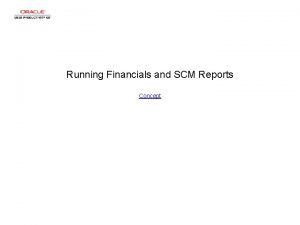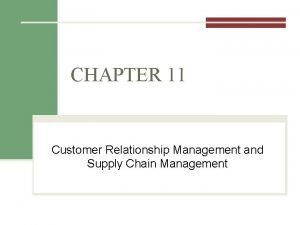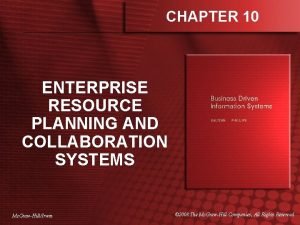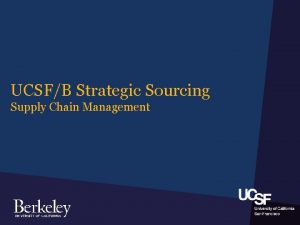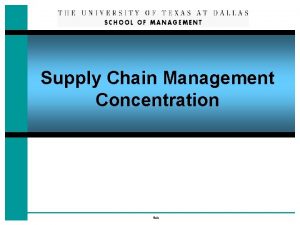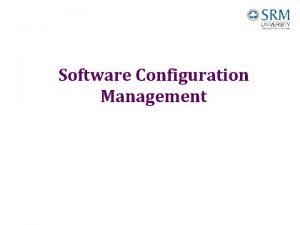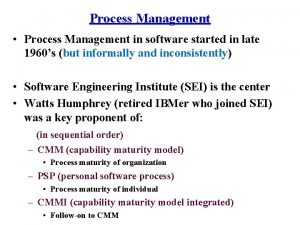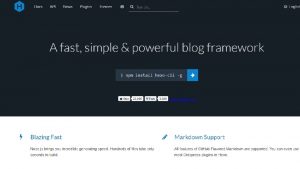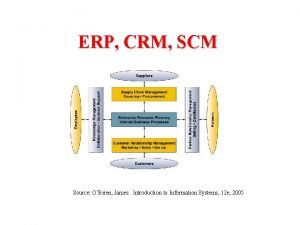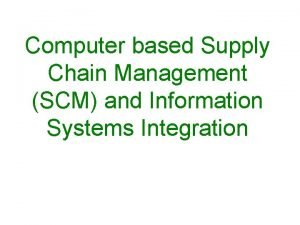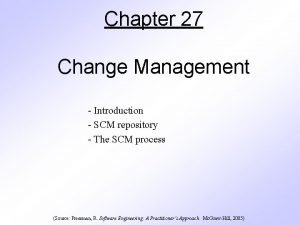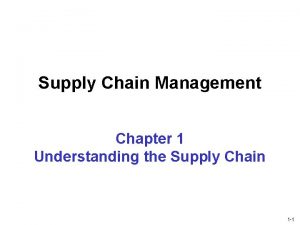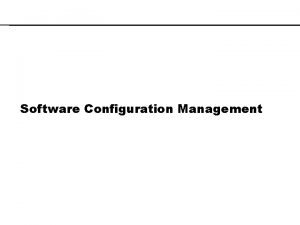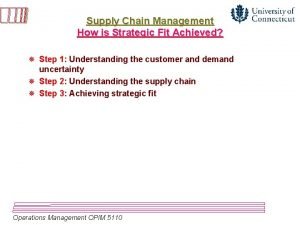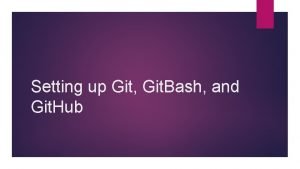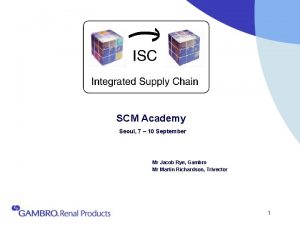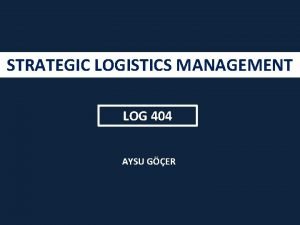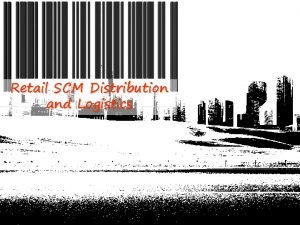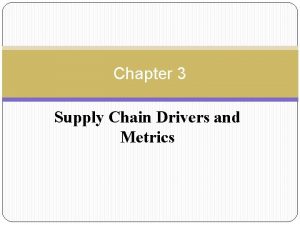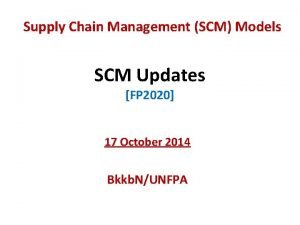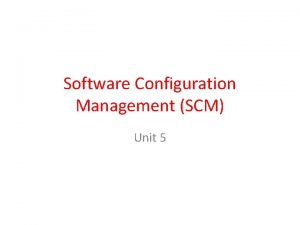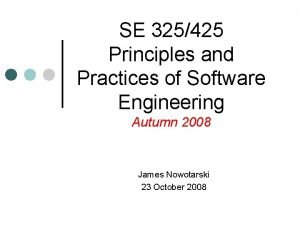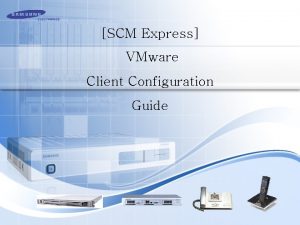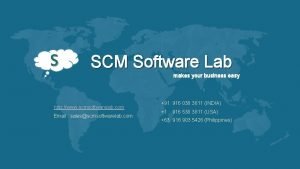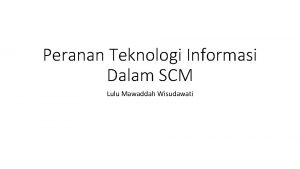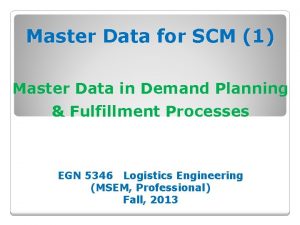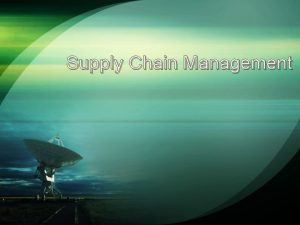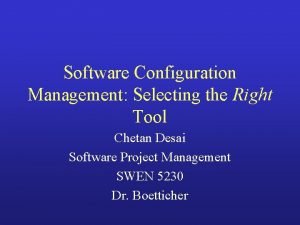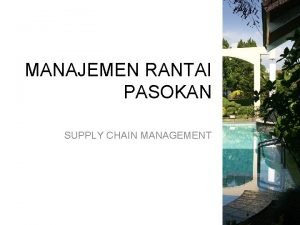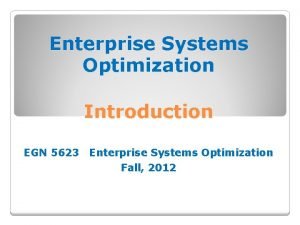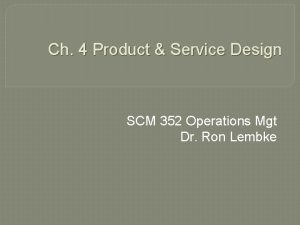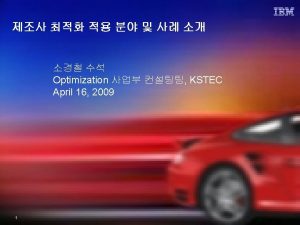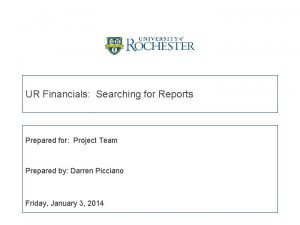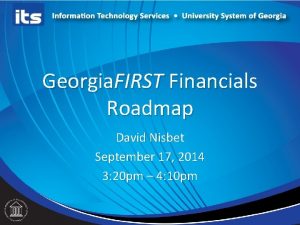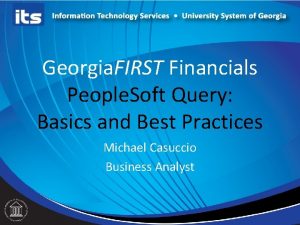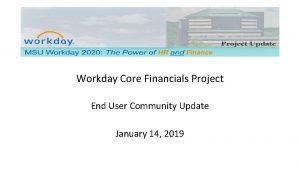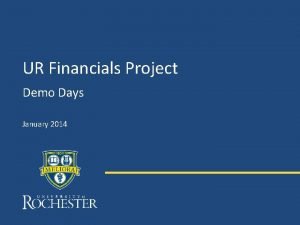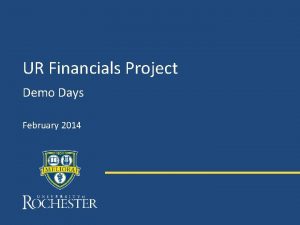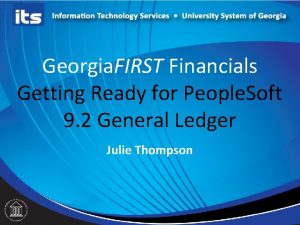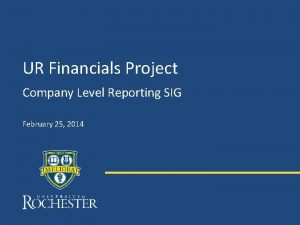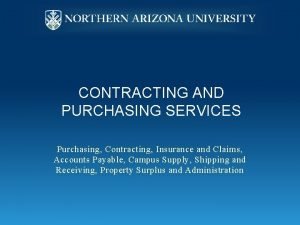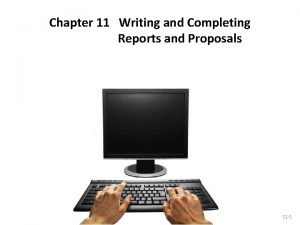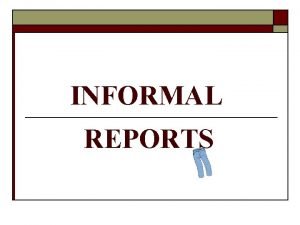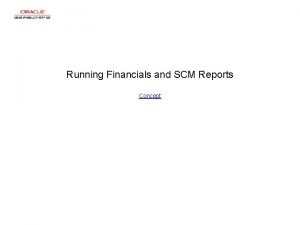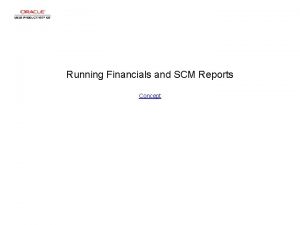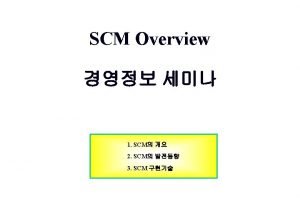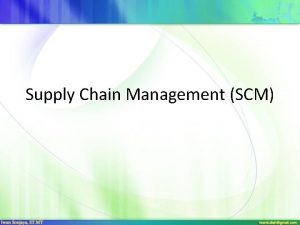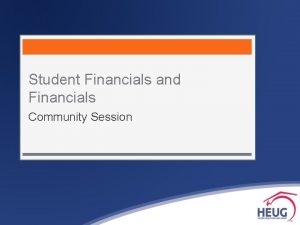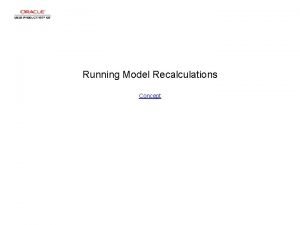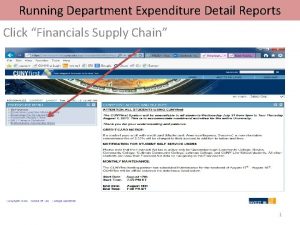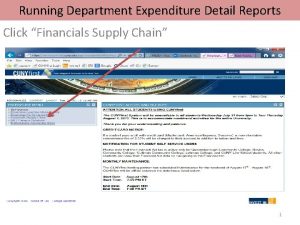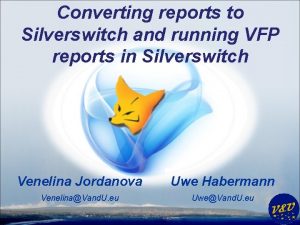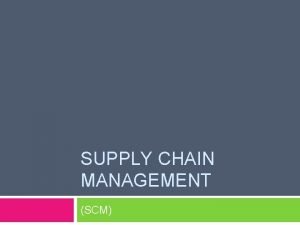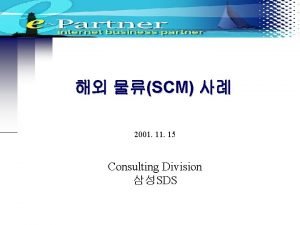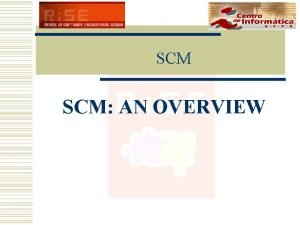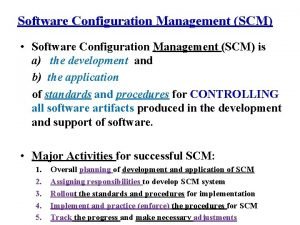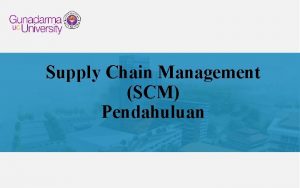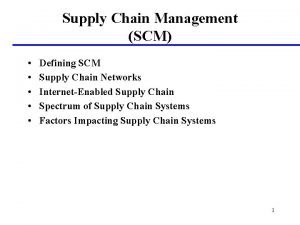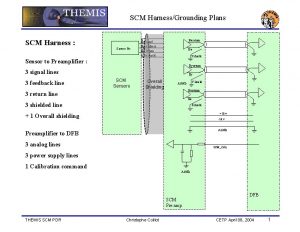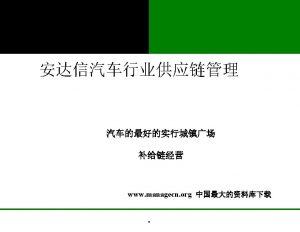Running Financials and SCM Reports Concept Running Financials










































































- Slides: 74

Running Financials and SCM Reports Concept

Running Financials and SCM Reports

Running Financials and SCM Reports Step 1 Begin by navigating to the Closing Trial Balance run control page. Click the Scroll Down arrow.

Running Financials and SCM Reports Step 2 Click the General Ledger menu.

Running Financials and SCM Reports Step 3 Click the Close Ledgers menu.

Running Financials and SCM Reports Step 4 Click the Closing Trial Balance menu.

Running Financials and SCM Reports Step 5 You can run this report by searching for an existing Run Control ID or you can add a new value. Creating a Run Control ID that is relevant to the report may help you remember it for future use. Click the Add a New Value tab.

Running Financials and SCM Reports Step 6 A Run Control ID is an identifier that, when paired with your User ID, uniquely identifies the process you are running. The Run Control ID defines parameters that are used when a process is run. This ensures that when a process runs in the background, the system does not prompt you for additional values. Enter the desired information into the Run Control ID field. Enter "RUN_CLSTB 2".

Running Financials and SCM Reports Step 7 Click the Add button.

Running Financials and SCM Reports Step 8 Use the Closing Trial Balance page to enter the request parameters. These parameters will be used to define the processing rules and data to be included when the report is run. The parameters will vary depending on which report you are running. For example, other reports might have fields where you specify the Set. ID, Employee ID, or Department values before running the report.

Running Financials and SCM Reports Step 9 For this report, you must define the Unit, Ledger, and Fiscal Year fields. For this example, use the default selections for the Unit and Ledger fields.

Running Financials and SCM Reports Step 10 Next, specify the fiscal year for which you will run the report. Click in the Fiscal Year field.

Running Financials and SCM Reports Step 11 Enter the desired information into the Fiscal Year field. Enter "2009".

Running Financials and SCM Reports Step 12 The parameters are set for this report. Click the Run button.

Running Financials and SCM Reports Step 13 Use the Process Scheduler Request page to enter or update parameters, such as server name and process output format.

Running Financials and SCM Reports Step 14 You must select a Server Name to identify the server on which the process will run. If you use the same Run Control ID for subsequent processes, the server name that you last used will default in this field. Click the Server Name list.

Running Financials and SCM Reports Step 15 Click the PSNT list item.

Running Financials and SCM Reports Step 16 Use the Run Date field to specify the date you want the process to run. This gives you the ability to set a report to run on a future date.

Running Financials and SCM Reports Step 17 Use the Recurrence list to specify the recurring time intervals for a process request to run. For instance, if you need to run a process every week day at 5: 00 pm that resolves all the transactions managed by your web site, you could select the run recurrence definition of Monday through Friday at 5: 00 pm to schedule this process to run at the appropriate time.

Running Financials and SCM Reports Step 18 Use the Run Time field to specify the time you want the process to run. This gives you the ability to set a report to run at a future time.

Running Financials and SCM Reports Step 19 Use the Reset to Current Date/Time button to reset the Run Date and Run Time to the present date and time.

Running Financials and SCM Reports Step 20 Use the Time Zone field to select the time zone in which the process will run. For example, you might be in Eastern Standard Time (EST) and schedule a process to run in Pacific Standard Time (PST).

Running Financials and SCM Reports Step 21 The Description field helps to uniquely identify a process. You should be familiar enough with the processes that you run as part of your daily tasks to identify them by this description.

Running Financials and SCM Reports Step 22 The Process Name field displays the name of the process as it appears in the definition.

Running Financials and SCM Reports Step 23 The Process Type field displays the type of process, such as SQR.

Running Financials and SCM Reports Step 24 Use the Type list to select the type of output you want to generate for this job. Your four choices are: File: This enables you to write the output to a file that will appear in the Output Destination. Printer: You can enter a custom printer location if you have the appropriate security access. Email: You can enter the destination information to send to a particular email recipient(s). Note that Email is available only for SQR and PS/n. Vision. Web: Sends all output of the process to the report repository, including log and trace files.

Running Financials and SCM Reports Step 25 Use the Format list to define the output format for the report. The values are dependent upon the Process Type for the process you select. For example, the default format for SQR is PDF and the default for PS/n. Vision is HTML.

Running Financials and SCM Reports Step 26 Click the OK button.

Running Financials and SCM Reports Step 27 The report is now running. Notice that your report has been assigned a Process Instance number. It is a good idea to make a note of the Process Instance number for future tracking.

Running Financials and SCM Reports Step 28 Now that you have used Process Scheduler to run your report, you will use Process Monitor to monitor the status of your report. You use the Process Monitor to: • Check the status of your submitted process requests. • Cancel process requests that have been initiated or are currently processing. • Hold process requests that are queued, and queue process requests you have put on hold. Click the Process Monitor link.

Running Financials and SCM Reports Step 29 Process Monitor supplies you with two pages, the Process List page and the Server List page. Use the Process List page to view the status of submitted report/process requests.

Running Financials and SCM Reports Step 30 Use the fields in the View Process Request For section to display specific process requests based on the search criteria entered in these fields.

Running Financials and SCM Reports Step 31 Use the User ID field to view the process requests submitted by a user ID. Usually, you view your own user ID. Leave this field blank to view all of the processes that you are authorized to view.

Running Financials and SCM Reports Step 32 Use the Type list to view process requests by a process type, such as Application Engine, BI Publisher, COBOL, SQR, or Application Engine processes.

Running Financials and SCM Reports Step 33 Use the Last list to specify an interval of time by which to limit the process requests that appear in the list. Enter a custom numerical value in the field, and then select a unit type: Days, Hours, or Minutes.

Running Financials and SCM Reports Step 34 Use the Server list to view process requests that are run on a particular server.

Running Financials and SCM Reports Step 35 Use the Name field to view all process requests for a specific process name.

Running Financials and SCM Reports Step 36 Use the Instance field to display results based on the process instance number. This number is automatically generated when a process is requested.

Running Financials and SCM Reports Step 37 Use the Run Status list to view process requests by status, such as Completed or Error.

Running Financials and SCM Reports Step 38 Use the Distribution Status list to view process requests by distribution status, such as Generated, Posted, or Not Posted.

Running Financials and SCM Reports Step 39 Click the Refresh button to display process requests based on the search criteria entered on this page.

Running Financials and SCM Reports Step 40 When you first enter this page, the Process List group box displays the process requests for your user ID, in this example VP 1. If you enter search criteria and click the Refresh button, the Process List group box displays all the process requests matching the search criteria.

Running Financials and SCM Reports Step 41 You can get details about a particular process request by clicking the Details link in the Details column. This opens the Process Detail page where you can view such details as request parameters and message logs. Click the Details link.

Running Financials and SCM Reports Step 42 Most of the items on the Process Detail page are display-only; however, you can use some controls to manipulate the program run, as needed.

Running Financials and SCM Reports Step 43 The Process group box contains general information to help you identify the process request. This is a displayonly group, showing basic descriptive information about this process.

Running Financials and SCM Reports Step 44 The Run group box shows specific run information, such as the run control ID and the run location. If the process runs on the server, the server name appears in the Server field any run recurrence that you have selected appears in the Recurrence field.

Running Financials and SCM Reports Step 45 The Update Process group box displays the actions that can be performed on a process request. Based on your user authorization and the current status of the process request, you can choose one of these actions. The possible actions are: Hold, Queue, Cancel, Delete, or Restart.

Running Financials and SCM Reports Step 46 The Actions group box contains links to other pages that provide additional details about the process parameters.

Running Financials and SCM Reports Step 47 Click the Parameters link to view additional information about the process parameters, such as runtime definition variables, the path and program used to run the process request, the location of the completed output, and additional information about the process request status.

Running Financials and SCM Reports Step 48 Click the Message Log link to view messages that are inserted into the message log by the process request.

Running Financials and SCM Reports Step 49 The Batch Timings link is only available for process requests with a process type of Application Engine. The Batch Timings report contains a set of statistics that system administrators can use to tune the system to gain better performance. This report relates specifically to People. Soft Application Engine program performance.

Running Financials and SCM Reports Step 50 When you click the View Log/Trace link, a new browser window opens, displaying links that enable you to view the message log and trace file in a browser. The View Log/Trace link appears on the Process Detail page when at least one of the following conditions is met: • The output destination for the process request is Web, and the report and log files were successfully posted to the Report Repository by the Distribution Agent. • The process request has a run status of Success. • The process request ran from a People. Soft Process Scheduler Server Agent that was set up using the Server Definition page with a distribution node.

Running Financials and SCM Reports Step 51 Return to the Process List page. Click the OK button.

Running Financials and SCM Reports Step 52 The Run Status field displays the current status of the process request. Knowing the run status helps you to see where the process request is in the queue or identify a problem if the process request has an error. The current status of your report is Initiated. This status indicates that the process request has not completed running or that this page has not been refreshed lately. The report is finished running when it has a status of Success. Larger reports will take longer to obtain a status of Success. This report is small, so you can click the Refresh button in a few moments to update the Run Status. For reports that take longer to run, it is a good idea to continue other work while the process request is being run in the background; there is no need to watch and wait.

Running Financials and SCM Reports Step 53 If the status is not Success, you can click the Refresh button to update the status.

Running Financials and SCM Reports Step 54 The Run Status field displays Success for your process request. Your report has finished running.

Running Financials and SCM Reports Step 55 Now that your report has finished running, you are ready to use Report Manager to view your report. Click the Go back to Closing Trial Balance link.

Running Financials and SCM Reports Step 56 Report Manager is like your own personal "in box" of reports and process output. It provides a secured means to view report content, check the posting status of your output, and see content detail messages. Click the Report Manager link.

Running Financials and SCM Reports Step 57 The List page displays the reports from multiple databases to which you have access. Unlike the Administration page, the List page lists reports when both of the following events occur. First, the Distribution Agent has successfully posted the report to the report repository. Once the report has posted, the Distribution Agent publishes a message to have an entry added to the report folder table for the new report. Second, the local message node has subscribed to the message that was sent by the Distribution Agent by adding an entry for the report in the report folder table.

Running Financials and SCM Reports Step 58 The Explorer page displays a hierarchical view of folders and reports. Unlike the Administration page, the Explorer page lists reports when both of the following events occur. First, the Distribution Agent has successfully posted the report to the report repository. Once the report has posted, the Distribution Agent publishes a message to have an entry added to the report folder table for the new report. Second, the local message node has subscribed to the message that was sent by the Distribution Agent by adding an entry for the report in the report folder table.

Running Financials and SCM Reports Step 59 You use the Administration page to view the report, view details about the report, and delete unwanted reports from the system. New reports that have been scheduled or are in the process of being posted to the report repository are viewed only through the Administration page.

Running Financials and SCM Reports Step 60 You use the Archives page to view reports that have been archived.

Running Financials and SCM Reports Step 61 For this example, you need to go to the Administration page to view the report. Click the Administration tab.

Running Financials and SCM Reports Step 62 The reports are listed in the Report List grid. You can sort this list by using the fields in the View Reports For section of the page.

Running Financials and SCM Reports Step 63 The Closing Trial Balance Report with the instance number 14700 is at the top of the list, and the status is Posted.

Running Financials and SCM Reports Step 64 In Report Manager, there are several status possibilities. Knowing what they mean will help you to understand the progress of your job without having to check the Process Monitor.

Running Financials and SCM Reports Step 65 Because the status of your report is Posted, you can view your report. Notice the Details link on the right side of your screen. Click the Details link.

Running Financials and SCM Reports Step 66 Use the Report Detail page to view details of the report, access and view the report, and send the report details to other users.

Running Financials and SCM Reports Step 67 The link for the report contains the process name followed by the process instance number. Click the GLS 1003_14700. PDF link.

Running Financials and SCM Reports Step 68 A second browser window is opened that displays the report. Review the report. If you wish, you can also print this report by using the browser's print button.

Running Financials and SCM Reports Step 69 Return to the Report Detail page. Click the Close button.

Running Financials and SCM Reports Step 70 Return to the Administration page. Click the OK button.

Running Financials and SCM Reports Step 71 If you are authorized to delete a report, the Select check box will be active. This enables you to select the report and then click the Delete button to remove the report from the list. Note that you must be assigned the Report. Dist. Admin (Report Distribution Administrator) or Report. Super. User (super user) role in People. Soft Security to be able to delete a report in Report Manager.

Running Financials and SCM Reports Step 72 You successfully requested a report, viewed the status using Process Monitor, and viewed the report using Report Manager. End of Procedure.
 Once upon a time there was a house with a man,
Once upon a time there was a house with a man, Running running running
Running running running Scm reports application
Scm reports application Is a report formal or informal
Is a report formal or informal Crm supply chain management
Crm supply chain management Crm and scm
Crm and scm Scm, crm, and erp are all extended erp components.
Scm, crm, and erp are all extended erp components. Ucsf scm
Ucsf scm Scalene muscle
Scalene muscle Utd supply chain management
Utd supply chain management Software configuration management audit
Software configuration management audit Scm reengineering
Scm reengineering Scm master data management
Scm master data management Scm is a cmmi level process area
Scm is a cmmi level process area Perancangan produk baru dalam perspektif scm
Perancangan produk baru dalam perspektif scm Gitscm.com
Gitscm.com Erp crm scm kms
Erp crm scm kms Edi scm
Edi scm Scm in computer
Scm in computer Scm repository
Scm repository Cycle view and push/pull view of supply chain
Cycle view and push/pull view of supply chain What is scm in software engineering
What is scm in software engineering Implied demand uncertainty spectrum
Implied demand uncertainty spectrum Https://git-scm.com/downloads
Https://git-scm.com/downloads Scm academy
Scm academy Scm zara
Scm zara Scor model ppt
Scor model ppt Retail and distribution chains
Retail and distribution chains Seahi scm
Seahi scm Adf scm
Adf scm H&m bcg matrix
H&m bcg matrix Scm 7052
Scm 7052 Banque populaire ri
Banque populaire ri Drivers of supply chain management
Drivers of supply chain management H&m supply chain
H&m supply chain Scm
Scm Scm flap
Scm flap Scm unit
Scm unit 325425
325425 Smartfind express aps
Smartfind express aps Scm software lab
Scm software lab Extraprise value network
Extraprise value network Scm 1
Scm 1 Scm 1
Scm 1 Starbucks background
Starbucks background Criteria for selecting the right scm tool is based on
Criteria for selecting the right scm tool is based on Tantangan dalam mengelola scm
Tantangan dalam mengelola scm Scm-pds
Scm-pds Scm 352
Scm 352 Erp aps
Erp aps Financials.onesource.uga
Financials.onesource.uga Urfinancials
Urfinancials Georgia first financials
Georgia first financials Goodman school of business portal
Goodman school of business portal Ga first financials
Ga first financials Workday core financials
Workday core financials Workday financials demo
Workday financials demo Workday financials demo
Workday financials demo Ud financials
Ud financials Ga first financials
Ga first financials Workday financials implementation
Workday financials implementation Ucf argis
Ucf argis Ur financials
Ur financials Aquaponics financials
Aquaponics financials Yale workday
Yale workday My ui financials
My ui financials Peoplesoft financials nau
Peoplesoft financials nau Nasdaq: bwld
Nasdaq: bwld Maintain records and reports
Maintain records and reports Writing and completing reports and proposals
Writing and completing reports and proposals Define output design
Define output design Reports and proposals
Reports and proposals What is your real self and ideal self
What is your real self and ideal self Perbedaan pemasaran dan penjualan
Perbedaan pemasaran dan penjualan Informal report definition
Informal report definition


